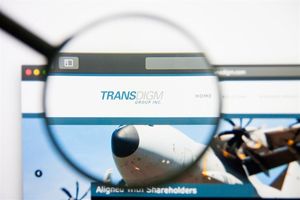Data on a potential immunotherapy for multiple myeloma and a City of Hope-developed vaccine against cytomegalovirus in transplant recipients were presented
City of Hope doctors presented data on an investigational bispecific antibody for multiple myeloma and the CMVPepVax, a City of Hope-developed vaccine against the cytomegalovirus, at this year’s ASH Annual Meeting.
“City of Hope continues to be a leader in innovative research on investigational immunotherapies for blood cancers and improving stem cell transplants,” said Eileen Smith, M.D., City of Hope’s Francis & Kathleen McNamara Distinguished Chair in Hematology and Hematopoietic Cell Transplantation. “New research at this year’s ASH conference includes promising investigational immunotherapies for lymphoma, multiple myeloma, leukemia and other blood cancers and an update on a City of Hope-developed vaccine to prevent a virus that can cause serious complications in stem cell transplant recipients.”
Here are highlights of City of Hope research presented at the ASH conference:
Investigational bispecific antibody for multiple myeloma is well-tolerated and effective
Bispecific antibodies are an emerging immunotherapy against blood cancers. City of Hope’s Elizabeth Budde, M.D., Ph.D., presented at this year’s ASH conference on mosunetuzumab. The research demonstrated that mosunetuzumab is a safe and effective investigational bispecific antibody for follicular lymphoma.
Talquetamab is an investigational therapy that is also demonstrating encouraging results for the treatment of relapsed multiple myeloma, according to a study led by Amrita Krishnan, M.D., director of the Judy and Bernard Briskin Center for Multiple Myeloma Research at City of Hope and chief, Division of Multiple Myeloma.
Talquetamab targets the G protein-coupled receptor family C group 5 member (GPRC5D) that has a high expression on malignant plasma cells and is limited on normal human tissue. The first-in-class bispecific antibody directs T cells to kill multiple myeloma cells by binding to both GPRC5D and CD3 receptors.
Patients with relapsed or difficult to treat multiple myeloma in the Phase 1 study received recommended Phase 2 doses as an injection on a weekly or biweekly basis. By increasing the doses slowly, researchers hope that will help to minimize the severity of cytokine release syndrome.
Krishnan presented data on 55 patients. For the study, 30 patients who received the therapy weekly (and their results were evaluable, meaning they could be included in the study) and 23 people who received it on a biweekly schedule were included. The study is ongoing.
In the weekly cohort, the overall response rate was 70% and there was a very good partial response or better in 57% of patients.
“The response numbers are very strong and what’s also remarkable is that the responses were durable and deepened over time in both groups,” Krishnan said.
Cytokine release syndrome occurred in 73% of the weekly dose cohort, but only one patient had a severe case and it was treatable. Other side effects included neutropenia and dysgeusia.
“We are excited that our results demonstrated that talquetamab is well-tolerated and highly effective at the Phase 2 dose level and with tolerable side effects,” Krishnan said.
Further studies of the therapy on its own or in combination with other treatments for multiple myeloma are underway.
City of Hope-developed vaccine to prevent cytomegalovirus shows safety, tolerability
Despite therapies to help prevent the cytomegalovirus (CMV), which can flare up in blood marrow/stem cell transplant recipients who are immunocompromised, CMV infections are one of the most common complications in these patients. Furthermore, the antiviral drugs used to prevent flare-ups are toxic, expensive and increase the risk of other opportunistic infections.
City of Hope has developed an anti-CMV vaccine, known as CMVPepVax. At this year’s ASH conference, the results of a Phase 2 trial using CMVPepVax were reported by Ryotaro Nakamura, M.D., City of Hope’s Jan & Mace Siegel Professor in Hematology & Hematopoietic Cell Transplantation in the Division of Leukemia.
The double blinded, placebo-controlled, randomized Phase 2 trial enrolled stem cell transplant recipients from four transplant centers, including City of Hope. Nakamura reported on data from 32 patients in the vaccine arm and 29 patients in the placebo arm.
CMVPepVax was delivered via injections 28 days after transplant and 56 days after the procedure.
Trial results demonstrated that there was no difference in CMV reactivation in both arms.
CMVPepVax was well-tolerated in patients with no increase in adverse side effects. Transplant outcomes were also similar between the two groups when comparing one-year overall survival, relapse-free survival, nonrelapse mortality, relapse and acute graft-versus-host disease (GVHD).
Significantly higher levels of CMV-targeting T cells were measured in patients in the vaccine arm who did not have CMV in their bloodstream. In patients who had the CMVPepVax injections, robust expansion of functional T cells also occurred.
“Our results confirm that CMVPepVax is safe to use and provides an immune response,” Nakamura said. “Although the vaccine did not reduce the presence of CMV in the bloodstream, there were favorable CD8 T cell responses, which are protective in principle, but maybe didn't recover fast enough to prevent CMV from reactivating.”
Next steps include researching whether stem cell donors who receive the vaccine can transfer immunity to patients, as well as providing a booster to patients. This may lead to faster immune responses after transplant.
Using probiotics for stem cell transplant patients
City of Hope is a leader in bone marrow and stem cell transplantation — it was one of the first cancer centers nationwide to perform a bone marrow transplant and has performed more than 17,000 bone marrow/stem cell transplants since 1976. Because of this leadership, City of Hope doctors and scientists are investigating how to make the transplant process better, as well as how to deal with complications that may arise from the procedure, such as GVHD.
Led by Karamjeet S. Sandhu, M.D., an assistant professor in City of Hope's Division of Leukemia in the Department of Hematology & Hematopoietic Cell Transplantation, a City of Hope study examined how adding the probiotic CBM 588 to transplant recipients’ diets might decrease inflammation in the gut and lower the risk of GVHD. The results were discussed in an oral presentation at the ASH conference.
Sandhu explained that the body hosts microbial communities, known as the microbiome. These microbes help the body in several metabolic processes, such as digesting food, strengthening the immune system, protecting against other bacteria and producing vitamins, including B vitamins.
Recent studies have shown the microbiome can play a role in cancer risk and how a person’s body responds to cancer treatment. In people with blood cancers who receive a transplant, there is a direct link between the health of microbiome and survival.
“Imbalance among these microbial species have also been associated with several transplant complications including GVHD,” said Sandhu, M.D. He added that the imbalance also contributes to morbidity and mortality.
For the study, Sandhu and his team used Clostridium Butyricum Miyairi 588 (CBM588), a probiotic strain that has been used in Japan for several decades to manage diarrhea caused by antibiotics or infections. CBM588 is a butyrate-producing bacteria present in the spore form in soil and food. Administration of CBM588 has shown anti-inflammatory and immune modulating effects, as well as evidence of anti-cancer activity.
This was the first study of CBM588 among bone marrow/stem cell transplant recipients. Fifteen patients received the current standard of care therapies to prevent GVHD and 21 received CBM588 in addition to standard of care for GVHD.
“Our study demonstrated that CMB588 is safe and feasible to use in this patient population without increasing mortality,” Sandhu said. “We even noted an improvement in gastrointestinal GVHD, but further studies are needed to prove the effect and mechanism of action among recipients of bone marrow/stem cell transplantation.”
Joint study examines somatic mutations in CMML patients, impact on stem cell transplants
Chronic myelomonocytic leukemia (CMML) is a rare form of leukemia that primarily affects older adults. The only potential cure at this time is allogeneic hematopoietic cell transplantation, also known as a stem cell transplant.
Research has shown that somatic mutations — genetic changes that are acquired during life and not inherited — are an important factor in determining prognosis for CMML patients. However, limited data are available regarding their impact on outcomes after CMML patients receive transplant.
A joint study between City of Hope and Center for International Blood and Marrow Transplant Research (CIBMTR) analyzed the relationship between somatic mutations in CMML and their impact on stem cell transplants.
Additionally, the study aimed to evaluate two separate scoring systems commonly used in nontransplant CMML patients, the CMML-specific prognostic scoring system (CPSS) and molecular CPSS (CPSS-Mol), which takes into account the somatic mutations, to find out if they can predict the results of a transplant.
Led by City of Hope’s Matthew Mei, M.D., an associate professor in City of Hope’s Division of Lymphoma, Department of Hematology & Hematopoietic Cell Transplantation, the study included 313 patients across 78 different transplant centers, all of whom underwent a comprehensive mutation analysis of 131 genes performed at City of Hope under the supervision of Raju K. Pillai, M.D., director of Pathology Core Laboratories in Beckman Research Institute of City of Hope.
The study found that 93% of patients had at least one mutation identified, and the median number of mutations was three. The most frequently mutated genes were ASXL1 (62%), TET2 (35%), KRAS/NRAS (33% combined) and SRSF2 (31%); TP53 was mutated in 3% of patients.
Both the CPSS and CPSS-Mol were predictive of overall survival after transplant; however, neither system was able to identify patients who were at an increased risk of relapse. Furthermore, the incorporation of somatic mutations did not appear to refine the prognosis.
“Our study is the largest analysis of CMML patients who underwent a stem cell transplant with paired mutation analysis,” Mei said. “Overall, patients with CMML remain at high risk for relapse after transplant. Novel therapies aimed at decreasing relapse and making transplants safer, as well as improved methods of predicting outcomes of transplant in CMML, are still critically needed.”
Additional research on chimeric antigen receptor (CAR) T therapy and stem cell transplantation presented at ASH
Tanya Siddiqi, M.D., director of City of Hope's Chronic Lymphocytic Leukemia Program, also presented a poster on the Transcend NHL 001 trial at the ASH conference, and Ibrahim Aldoss, M.D., associate professor, City of Hope's Division of Leukemia, presented a poster on the outcomes of allogeneic hematopoietic cell transplantation in adults with Ph-like acute lymphoblastic leukemia.
City of Hope is a leader in blood cancer research and treatment. The National Cancer Institute-designated comprehensive cancer center has performed more than 17,000 bone marrow/stem cell transplants and is a leader in chimeric antigen receptor (CAR) T therapy, with nearly 800 patients treated with immune effector cells, including CAR T therapy, and nearly 80 open or completed trials.
About City of Hope
City of Hope is an independent biomedical research and treatment center for cancer, diabetes and other life-threatening diseases. Founded in 1913, City of Hope is a leader in bone marrow transplantation and immunotherapy such as CAR T cell therapy. City of Hope’s translational research and personalized treatment protocols advance care throughout the world. Human synthetic insulin, monoclonal antibodies and numerous breakthrough cancer drugs are based on technology developed at the institution. A National Cancer Institute-designated comprehensive cancer center and a founding member of the National Comprehensive Cancer Network, City of Hope is ranked among the nation’s “Best Hospitals” in cancer by U.S. News & World Report. Its main campus is located near Los Angeles, with additional locations throughout Southern California and in Arizona. Translational Genomics Research Institute (TGen) became a part of City of Hope in 2016. AccessHope™, a subsidiary launched in 2019, serves employers and their health care partners by providing access to NCI-designated cancer center expertise. For more information about City of Hope, follow us on Facebook, Twitter, YouTube or Instagram.
View source version on businesswire.com: https://www.businesswire.com/news/home/20211216005412/en/
City of Hope presented leading-edge research on blood cancers at American Society of Hematology (ASH) Annual Meeting.
Contacts
Letisia Marquez
626-476-7593
lemarquez@coh.org






